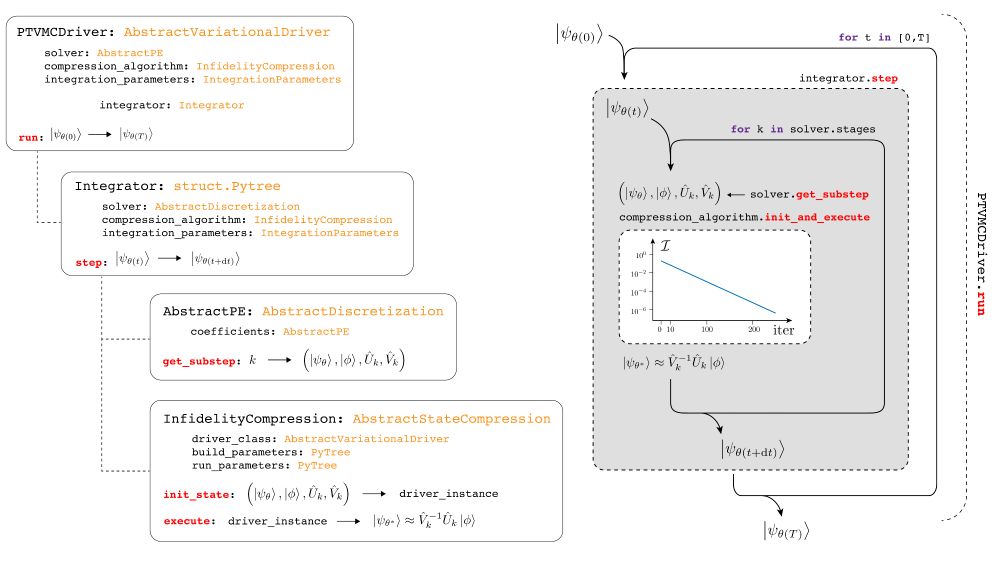Filippo Vicentini
@philipvinc.bsky.social
Professor of Quantum Physics and AI at Ecole Polytechnique in Paris.
Core contributor to the Neural Quantum State simulation methods, and to open science efforts.
Core contributor to the Neural Quantum State simulation methods, and to open science efforts.
Credit goes to Antoine who pushed this through quickly.
This was also inspired by years-old discussions with Riccardo Rossi on sampling gradients (which we tried hard, but we believe we can match with this at a lower cost) and Ao Chen who mysteriously mentioned it in some paper before removing it.
This was also inspired by years-old discussions with Riccardo Rossi on sampling gradients (which we tried hard, but we believe we can match with this at a lower cost) and Ao Chen who mysteriously mentioned it in some paper before removing it.
July 9, 2025 at 12:49 PM
Credit goes to Antoine who pushed this through quickly.
This was also inspired by years-old discussions with Riccardo Rossi on sampling gradients (which we tried hard, but we believe we can match with this at a lower cost) and Ao Chen who mysteriously mentioned it in some paper before removing it.
This was also inspired by years-old discussions with Riccardo Rossi on sampling gradients (which we tried hard, but we believe we can match with this at a lower cost) and Ao Chen who mysteriously mentioned it in some paper before removing it.
For 'simple' problems sampling α=2 seems good, but for harder ones you benefit from an over dispersed distribution.
Worry not! This is FREE and you can even autotune α so VMC is not harder.
You can find a #NetKet based repository, fully reproducible github.com/NeuralQXLab/...
Worry not! This is FREE and you can even autotune α so VMC is not harder.
You can find a #NetKet based repository, fully reproducible github.com/NeuralQXLab/...

July 9, 2025 at 12:49 PM
For 'simple' problems sampling α=2 seems good, but for harder ones you benefit from an over dispersed distribution.
Worry not! This is FREE and you can even autotune α so VMC is not harder.
You can find a #NetKet based repository, fully reproducible github.com/NeuralQXLab/...
Worry not! This is FREE and you can even autotune α so VMC is not harder.
You can find a #NetKet based repository, fully reproducible github.com/NeuralQXLab/...
Let me conclude that this will be the starting point of a wider effort to package and cleanup NQS dynamics simulation methods.
We'll soon start a new effort to collect various codes for dynamics NQS methods and ensure that they can be pitted one against the other!
We'll soon start a new effort to collect various codes for dynamics NQS methods and ensure that they can be pitted one against the other!
February 25, 2025 at 2:22 PM
Let me conclude that this will be the starting point of a wider effort to package and cleanup NQS dynamics simulation methods.
We'll soon start a new effort to collect various codes for dynamics NQS methods and ensure that they can be pitted one against the other!
We'll soon start a new effort to collect various codes for dynamics NQS methods and ensure that they can be pitted one against the other!
I'd like to congratulate Luca, that 'leads by example' by being open, transparent and ensuring total reproducibility of his results.
I can only encourage all other people in our field (and beyond) to do the same!
I can only encourage all other people in our field (and beyond) to do the same!
February 25, 2025 at 2:22 PM
I'd like to congratulate Luca, that 'leads by example' by being open, transparent and ensuring total reproducibility of his results.
I can only encourage all other people in our field (and beyond) to do the same!
I can only encourage all other people in our field (and beyond) to do the same!
We also add all the states we obtained through our simulations, and you can compute quantities on them yourself. Just `nqxpack.load("data/states/t=XYZ.nk` and compare to our data!
The training scripts to train a 6x6 or 10x10 ViT or ConvNet are included, as well as an usable, well documented code.
The training scripts to train a 6x6 or 10x10 ViT or ConvNet are included, as well as an usable, well documented code.

February 25, 2025 at 2:22 PM
We also add all the states we obtained through our simulations, and you can compute quantities on them yourself. Just `nqxpack.load("data/states/t=XYZ.nk` and compare to our data!
The training scripts to train a 6x6 or 10x10 ViT or ConvNet are included, as well as an usable, well documented code.
The training scripts to train a 6x6 or 10x10 ViT or ConvNet are included, as well as an usable, well documented code.

